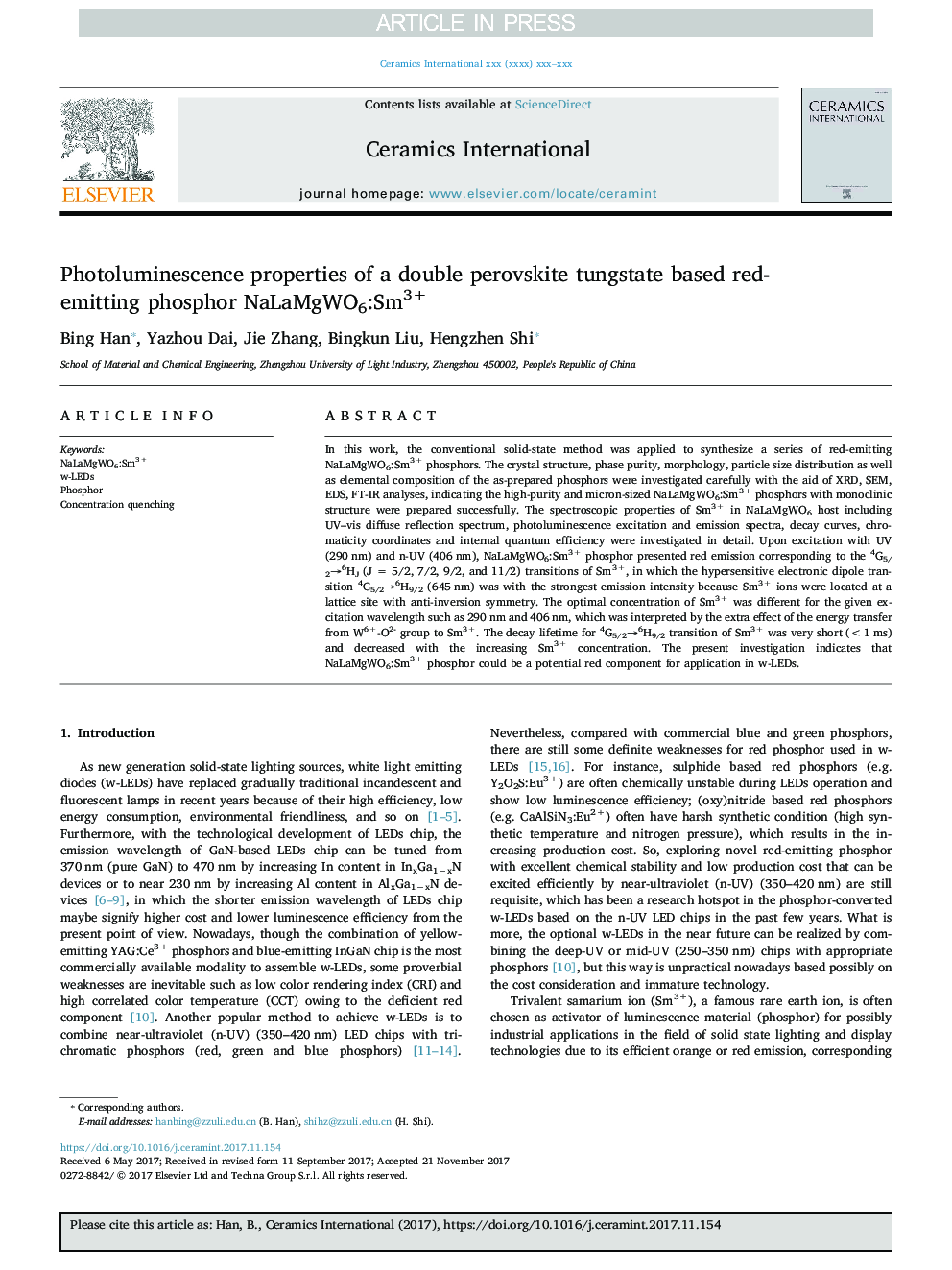| Article ID | Journal | Published Year | Pages | File Type |
|---|---|---|---|---|
| 7888186 | Ceramics International | 2018 | 7 Pages |
Abstract
In this work, the conventional solid-state method was applied to synthesize a series of red-emitting NaLaMgWO6:Sm3+ phosphors. The crystal structure, phase purity, morphology, particle size distribution as well as elemental composition of the as-prepared phosphors were investigated carefully with the aid of XRD, SEM, EDS, FT-IR analyses, indicating the high-purity and micron-sized NaLaMgWO6:Sm3+ phosphors with monoclinic structure were prepared successfully. The spectroscopic properties of Sm3+ in NaLaMgWO6 host including UV-vis diffuse reflection spectrum, photoluminescence excitation and emission spectra, decay curves, chromaticity coordinates and internal quantum efficiency were investigated in detail. Upon excitation with UV (290Â nm) and n-UV (406Â nm), NaLaMgWO6:Sm3+ phosphor presented red emission corresponding to the 4G5/2â6HJ (J = 5/2, 7/2, 9/2, and 11/2) transitions of Sm3+, in which the hypersensitive electronic dipole transition 4G5/2â6H9/2 (645Â nm) was with the strongest emission intensity because Sm3+ ions were located at a lattice site with anti-inversion symmetry. The optimal concentration of Sm3+ was different for the given excitation wavelength such as 290Â nm and 406Â nm, which was interpreted by the extra effect of the energy transfer from W6+-O2- group to Sm3+. The decay lifetime for 4G5/2â6H9/2 transition of Sm3+ was very short (< 1Â ms) and decreased with the increasing Sm3+ concentration. The present investigation indicates that NaLaMgWO6:Sm3+ phosphor could be a potential red component for application in w-LEDs.
Related Topics
Physical Sciences and Engineering
Materials Science
Ceramics and Composites
Authors
Bing Han, Yazhou Dai, Jie Zhang, Bingkun Liu, Hengzhen Shi,
